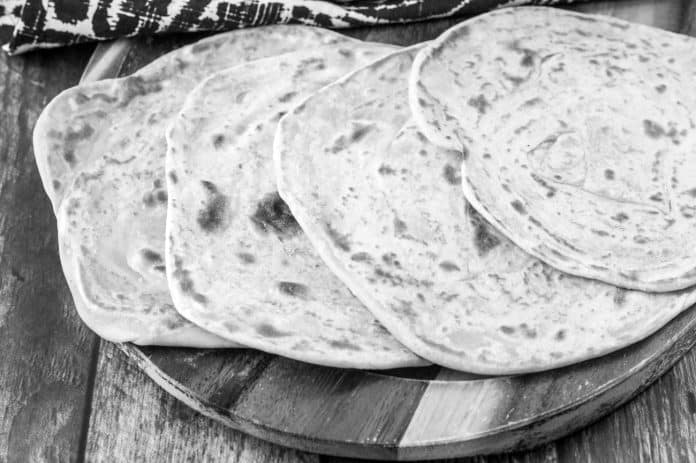Swahili Food Recipe: African Chapati, the Preferred Tanzania Flat Bread
What is Chapati?
Let’s get started with today’s Chapati recipe. First and foremost, let me state that, while influenced by the Indian variation, the African Chapati version differs significantly from its inspiration. I’ve noticed some unfavorable comments on other websites, with a long list of grievances about how the African variation is done poorly by Indian critics. Because the Zanzibar archipelagos were an important stop on the commercial route, it is possible that the Eastern Africans met Indians who exposed them to the tasty chapati. On the other hand, the Africans turned it into their own by making unique adaptations. While utilizing oil rather than ghee may appear weird to an Indian, it is common practice in Eastern Africa.
Chapati in Kenya, Tanzania and Rest of East Africa (also known as East African Chapati)
This flat chapati bread loaf is famous in Eastern African countries such as Kenya, Burundi, Somalia, Mozambique, and Rwanda. However, this layered form is the popular choice of chapati in Tanzania.
Step by Step Instructions on How to Make Chapati Tanzania Style
TIME TO PREPARE: 40 MINUTES
TIME TO COOK: 15 MINUTES
YIELD: 4 SERVINGS
Chapatis Recipe Ingredients:
- 2 3/4 cups regular chapati flour
- 3/4 salt
- 4 tbsp oil
Two a half cups of flour, oil, and salt in a large mixing dish. When kneading, more flour will be added.
Knead in one cup of water for about five minutes till the dough blends together. It’ll be really soft and slippery. Cover tightly with a tea cloth and set aside for 10 to 15 minutes to rest. This allows the gluten to form, making the dough simpler to knead.
Knead for ten minutes on a shallowly floured surface. Make a timer. It would be best if you mixed for so long to create a very soft\smooth dough, which is the defining feature of African chapati. If the dough begins to cling to the surface, add up to 1 tbsp of flour as needed while kneading. Cover the Chapati dough with a moist cloth and put it aside for fifteen minutes.
Roll the chilled dough into a big circle, about 12 inches in diameter, on a shallowly floured surface. Apply oil to the top. Make a cylinder out of the dough. Stretch it to 18 inches by slamming it against the working table like a skipping rope while gripping each end and slowly extending. Cut it into four equal pieces.
Stretch every one of these four pieces with the same skipping rope technique until they are about 10 inches long. Roll into unique coils, adding a little oil [as lubricant] at the end to help the dough stick together.
Warm-up a skillet. Roll every coil into an 8-inch-diameter circle.
Place the circular inside the hot pan. Gently rub the upper half of the dough with oil after one minute. Allow it to cook for 2 to 3 minutes. Turn it over. Apply oil to the top. Simmer for another one min on the other side. Remove from the fire and set aside while you finish the rest.
Look at all of those tiny bubbles. That’s due to your patience in mixing the dough for ten minutes and resting it, allowing all that gluten actually to develop without applying yeast!
Enjoy Chapati with your favorite African stew or soup. It is also commonly eaten for breakfast, sprinkled with honey.
All of that effort was worthwhile for these individual flaky layers.
Chapati Nutrition
Making Chapati with this recipe will yield the following results:
How many calories are in Chapati?
Serving. 1g | 59.6gram of Carbohydrates | 8.1gram of Protein | 15.2gram of Fat | 2gram of Saturated Fat | 2milligrams of Sodium | 2.1gram of Fiber.
For more articles related to Tanzania Food Recipes, click here!

































